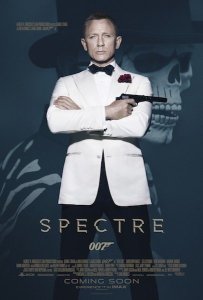For a lesbian romance and art film with controversial sex scenes, “Blue is the Warmest Color” feels very normalized.
Beyond “Blue is the Warmest Color’s” length, its country of origin, its intimate aesthetic or its controversial, NC-17 lesbian sex scenes, Abdellatif Kechiche’s Palme D’Or winning film feels hardly like an art house movie at all. It’s groundbreaking in the way that this love story of two lesbians, a subject so often embroiled in politics, oppression and hardship when seen in the movies, can feel so ordinary.
“Blue is the Warmest Color” is a life story, a story of a relationship; it’s a romance, a coming-of-age teen drama, a tale of a woman’s journey or just about as close to a genre movie as you can get. That Kechiche and his two actresses, Adele Exarchopoulous and Lea Seydoux, get at this story with such honesty is good enough; it doesn’t have to be a “gay” movie.
The film follows the relationship of 17-year-old Adele (Exarchopoulous) and college art student Emma (Seydoux) over several years, exploring their intellectual chemistry, artistic and political forays and every inch of their passionate lovemaking.
The much-buzzed about sex scenes in question are so vivid, so steamy and so clear in depicting their naked bodies that it imbues the whole film with vigorous physical intensity. The first of three such scenes lasts for over seven minutes, forming a complicated web of body parts and arousal that leaves little to the imagination. Short of calling it pornography, the film in reference to these scenes could easily be called “Tangled Up in Blue.”
And yet their story itself is not as complex. Adele is a girl just discovering her sexuality. Her gossipy friends tell her that a hot senior has a crush on her, and when the two talk together on a bus, their conversation feels familiar. He plays guitar, she “likes everything” when it comes to music, they go out and share a few laughs, and when they finally have sex in a scene quite similar to those with Emma, if Adele is missing something, it’s not for a lack of physicality.
What Adele is missing is something intangible, and Kechiche will spend the course of three hours trying to piece together what that is. Some may criticize the film’s length, but then relationships take time. Continue reading “Blue is the Warmest Color”
 Do we need James Bond in 2015? After 2013’s incredible “Skyfall”, the answer was absolutely yes. It was first off unheard of that an action movie, as shot by Roger Deakins, could look that good. But Bond also felt like a human relief in a world of superheroes, wizards and teenagers fighting in dystopian universes. Give me a hard drinking and vengeful Bond with a tortured past, casual misogyny and all, and let him take on a contemporary computer hacker and show why there’s still a place for an analog assassin.
Do we need James Bond in 2015? After 2013’s incredible “Skyfall”, the answer was absolutely yes. It was first off unheard of that an action movie, as shot by Roger Deakins, could look that good. But Bond also felt like a human relief in a world of superheroes, wizards and teenagers fighting in dystopian universes. Give me a hard drinking and vengeful Bond with a tortured past, casual misogyny and all, and let him take on a contemporary computer hacker and show why there’s still a place for an analog assassin.